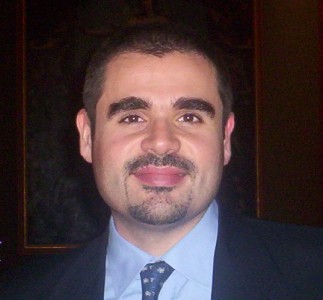BUSM Study Shows Role of Cellular Protein in Regulation of Binge Eating

Researchers from Boston University School of Medicine (BUSM) have demonstrated in experimental models that blocking the Sigma-1 receptor, a cellular protein, reduced binge eating and caused binge eaters to eat more slowly. The research, which is published online in Neuropsychopharmacology, was led by Pietro Cottone, PhD, and Valentina Sabino, PhD, both assistant professors in the pharmacology and psychiatry departments at BUSM.
Binge eating disorder, which affects approximately 15 million Americans, is believed to be the eating disorder that most closely resembles substance dependence. In binge eating subjects, normal regulatory mechanisms that control hunger do not function properly. Binge eaters typically gorge on “junk” foods excessively and compulsively despite knowing the adverse consequences, which are physical, emotional and social in nature. In addition, binge eaters typically experience distress and withdrawal when they abstain from junk food.
The researchers developed an experimental model of compulsive binge eating by providing a sugary, chocolate diet only for one hour a day while the control group was given a standard laboratory diet. Within two weeks, the group exposed to the sugary diet exhibited binge eating behavior and ate four times as much as the controls. In addition, the experimental binge eaters exhibited compulsive behavior by putting themselves in a potentially risky situation in order to get to the sugary food while the control group avoided the risk.

The researchers then tested whether a drug that blocks the Sigma-1 receptor could reduce binge eating of the sugary diet. The experimental data showed the drug successfully reduced binge eating by 40 percent, caused the binge eaters to eat more slowly and blocked the risky behavior.
The abnormal, risky behavior exhibited by the binge eating experimental group suggested to the researchers that there could be something wrong with how decisions were made. Because evaluation of risks and decision making are functions executed in the prefronto-cortical regions of the brain, the researchers tested whether the abundance of Sigma-1 receptors in those regions was abnormal in the binge eaters. They found that Sigma-1 receptor expression was unusually high in those areas, which could explain why blocking its function could decrease both compulsive binge eating and risky behavior.
“These findings suggest that the Sigma-1 receptor may contribute to the neurobiological adaptations that cause compulsive-like eating, opening up a new potential therapeutic treatment target for binge eating disorder,” said Cottone, who also co-directs the Laboratory of Addictive Disorders at BUSM with Sabino.
This research was funded by the National Institute on Drug Abuse under award numbers 5R00DA023680-05 and 5R01DA030425-02; the National Institute of Mental Health under award numbers 1R01MH093650-01A1 and 5R01MH091945-03; the National Institute on Alcohol Abuse and Alcoholism under award number 5R00AA016731-05; and the Boston University Peter Paul Career Development Professorship and Boston University Undergraduate Research Opportunities Program. The study’s other co-authors include Xiaofan Wang, MD, PhD; Jin Won Park, MA; Marta Valenza, MS; Angelo Blasio, PhD; Jina Kwak; Malliga R. Iyer, PhD; Luca Steardo, MD; Kenner C. Rice, PhD; and Teruo Hayashi, MD, PhD.